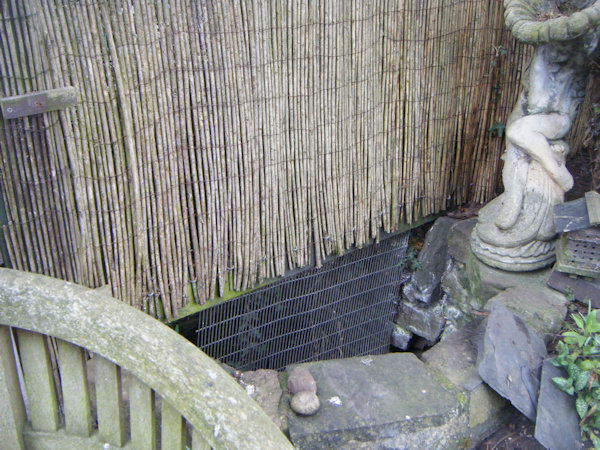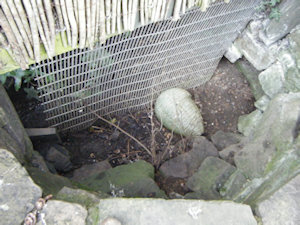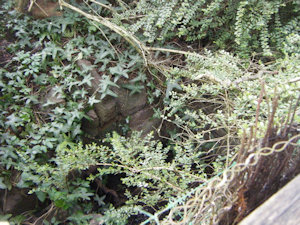 |
Dedication: Saint John the Baptist Location: Lutterworth Coordinates: 52.45329, -1.20045 Grid reference: SP544842 Heritage designation: none |
HOME - ENGLAND - LEICESTERSHIRE
 |
Dedication: Saint John the Baptist Location: Lutterworth Coordinates: 52.45329, -1.20045 Grid reference: SP544842 Heritage designation: none |
It is clear that St John's Well took its dedication from the nearby Hospital of St John the Baptist, which was located just over three hundred metres from the spring. The hospital was founded during the reign of King John (1199-1216), with the purpose of providing hospitality to poor travellers; certainly, it is no coincidence that this hospital was located beside one of the main roads to London. It followed the Order of St Augustine. Quite unusually, the institution managed to survive the Reformation (although it had already fallen into a state of disrepair) and seems to have lasted until the 1670s. Without a doubt, the hospital used the nearby well of St John as their main water supply, and also, perhaps, for the healing of their sick patients.
There appears to have been some confusion regarding the identity of St John's Well during the 18th century, which is when the earliest references to its existence date from. John Nichols, in volume 4 of his History and Antiquities of the County of Leicester, published in 1795, quoted an unidentified source that described "St. John's well" as "a petrifying ſpring" in the "neighbourhood of Lutterworth" that was "ſo ſtrongly impregnated with petrifying qualities, that in a very little time it is ſaid to convert wood and ſeveral other ſubſtances into ſtone". However, Nichols instantly discredited this by asserting that "St. John's Well is in the town, oppoſite to the laſt houſe, on the left hand ſide towards London. It is a ſoft water, and uſed for drinking: we may therefore, perhaps, doubt its petrifying quality". The spring that Nichols himself described as the well does appear to be the correct site.
This was not the only mention that St John's Well got in Nichols' County History, however. According to Nichols, the site had become linked to a very strange local legend associated with John Wycliffe. Wycliffe, denounced as a heretic, was the rector of Lutterworth's parish church, where he died in 1384 after suffering a stroke whilst saying Mass. Wycliffe was a so-called "proto-Protestant", and he effectively laid the foundations for the future of Protestantism. Some decades after his death, his bones were exhumed from St Mary's Church, and burned; the resulting ashes were then cast into the River Swift. According to Nichols, this event became associated with St John's Well:
|
Tradition alſo ſays, that, at the time of this ceremony, one perſon who ſtaid [sic], after the reſt had left his [Wycliffe's] grave, in order to ſearch as ſtrictly after the leaſt bit of bone that might remain of him, as he had done into the erroneous tenets of his adverſaries, having found one, ran haſtily to his companions with it, in a triumphant manner; but, before he reached them, fell down, and daſhed his brains out; and from the very place where he fell immediately guſhed out a ſpring of water, which to this day is called St. John's Well. How far the Proteſtant is even with the Papiſt in this invention, let the reader judge. |
It is not, in fact, entirely implausible that a well originally dedicated to St John the Baptist later became associated with John Wycliffe. He was viewed as a sort of martyr figure, and he was in some places treated as a saint after his death, including, it appears, in Lutterworth. Indeed, the only evidence that proves that St John's Well predates this link with Wycliffe is the immense yew tree that stands directly next to it, which is certainly several centuries old.
It is, of course, quite odd that the site has never been marked on Ordnance Survey maps. Perhaps this is because the well has now dried up: it could easily have been dismissed as a rock-lined pit of no significance, especially as the documentation regarding its history is scant. The dry stone-lined pit is certainly of historical significance, however. When I visited the site in the March of 2025, the two halves of the well (which are split in half by a wooden fence, each half being in the garden of a different house) were each in quite a different condition. The northern half, which was very overgrown, seemed to have retained its original stonework, and it was square or rectangular in shape; the southern half had been altered and turned into an ornamental garden feature, and was circular in shape, constructed of larger, newer stones. The owner of the southern half informed me that the adjacent pond has nothing to do with the holy well, which has always been dry.
 |
 |
|
Access: Both halves of the well are located in the private gardens of two houses. |
Copyright 2025 britishholywells.co.uk